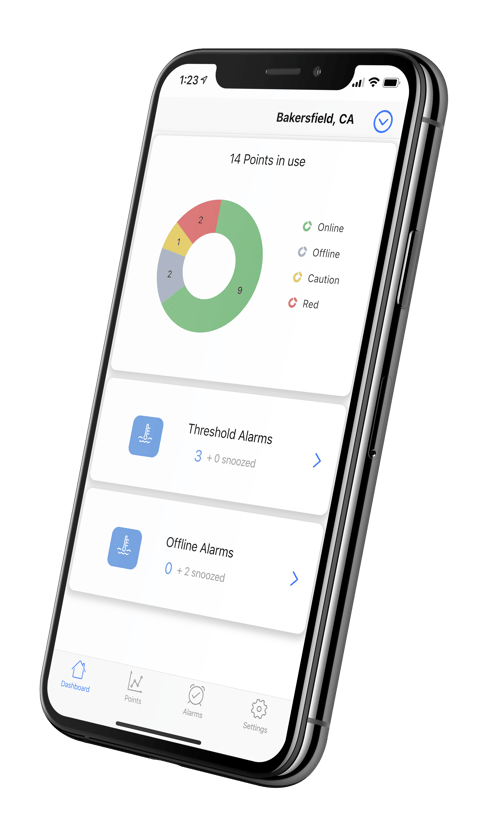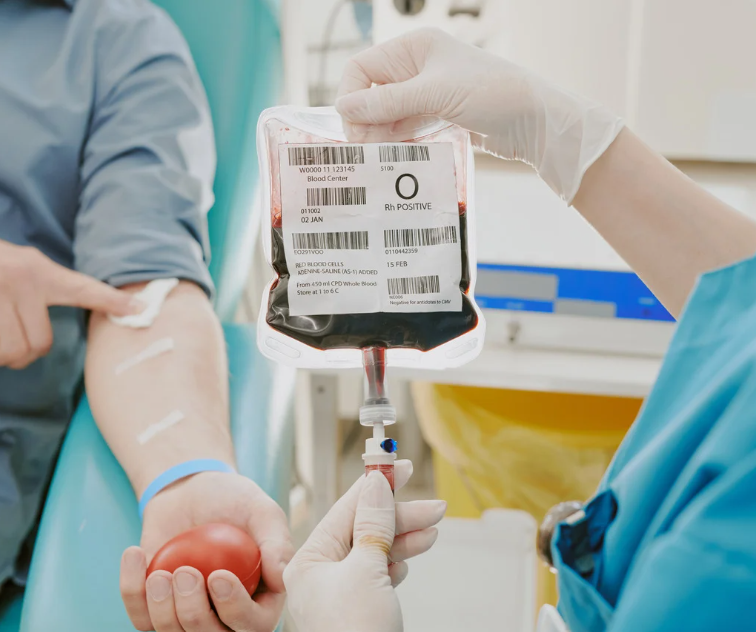
Identifying Open Door Threats in the OR to Reduce Surgical Site Infections
Operating rooms may be among the most tightly regulated environments in healthcare facilities, Sonicy helps ensure they're safe and monitored correctly.
Sonicu offers a comprehensive suite of monitoring solutions
that help organizations safeguard assets, automate compliance and reduce manual processes.
From protecting vaccines and research materials to safeguarding food service and facility operations, Sonicu’s monitoring applications cover temperature, humidity, pressure, and more. Whether you’re in healthcare, life sciences, food safety, or other industries, Sonicu provides visibility, compliance, and peace of mind across all your critical applications.
Designed with safety, efficiency and compliance always top of mind, we’ve evolved over a decade with continuous improvements from customer feedback. Serving the healthcare, research and food service industries.
Whether you're solving basic temperature monitoring needs or managing complex, multi-environment compliance, Sonicu’s full line of meters, sensors, and hubs has you covered.
Sonicu offers a comprehensive suite of monitoring solutions
that help organizations safeguard assets, automate compliance and reduce manual processes.

Understanding Heat Stress and OSHA Regulations: How to Protect Your Employees and Ensure Compliance

Making supply chain improvements is a continuous process, and temperature monitoring helps protect assets while improving value for all stakeholders.
The delivery system for temperature-sensitive goods is a vast network of freezers, cold storage facilities, refrigerated trucks and train cars, and other such climate-controlled points.
This network of interconnected infrastructure is known as the cold chain, and in today's interconnected world, it's more crucial than ever before.
During the pandemic, cold chains became indispensable in the delivery of pharmaceuticals and medical products.
Government-imposed lockdowns increased the demand for home deliveries of essentials, such as food, in an effort to limit human interaction and reduce the risk of exposure.
Now, in the post-pandemic era, as we navigate a new normal, cold chains will continue to play a vital role in our lives.
Due to our reliance on vaccines and booster shots as well as home and office deliveries, keeping cold chains operational, safe, and functional is more essential than ever.
Additionally, government oversight of the supply chain is growing in both reach and nuance, making services like temperature monitoring less of an option and more of a requirement to satisfy regulators.
Moreover, given that flu season is underway and there are reports of potential surges in infection rates over the winter period, we can expect increased activity in the movement of medications and vaccines.
Distributors must meet the usual seasonal demand as well as the growing demand arising from emerging developments. They must do so while maintaining high standards in how temperature-controlled products are handled at every stage of the supply chain.
And they always have to keep costs in mind when considering onboarding new technologies.
Blending all of these requirements and characteristics is easier said than done, however.
What can be done to ensure distributors can maintain an effective and efficient delivery process through to the final destination of any perishable good or asset?
Affordable Tech to Serve the Cold Chain
Implementing temperature monitoring solutions is a sure way to increase end-to-end cold chain visibility and efficacy.
Distributors are increasingly turning to temperature monitoring solutions such as temperature recording devices and automated alert systems to strengthen the cold chain.
Temperature monitoring improves the last-mile delivery experience by making it easier to detect issues that arise during transportation or storage, while at the same time minimizing the chances of products being mishandled.
Pharmaceutical retailers and distributors are already leveraging Sonicu’s battery-powered, remote, and mobile solution to seamlessly blend the monitoring of fixed assets like a walk-in freezer with mobile assets like a delivery truck or even a drug cooler used for door delivery of temperature-sensitive drugs.
This is crucial, especially in the wake of legislative developments that require better traceability across the board for those handling food products. The Food Safety Modernization Act and the Drug Supply Chain Safety Act will each increase the regulatory requirements placed on cold chain operators.
Thanks to affordable and intuitive temperature monitoring, manufacturers are in a better position to gauge whether a shipment is in the right condition to progress to the next stage or if it needs to be replaced.
Consequently, products arrive at their destination as intended while manufacturers operate in line with the relevant regulations.
Exploring Benefits of Temperature Monitoring Throughout the Cold Chain
1. Improved cold chain efficiency
When dealing with temperature-sensitive products, more often than not time is of the essence.
Temperature monitoring devices send periodic notifications on the condition of refrigerated goods while in transit.
As a result, manufacturers and distributors have the ability to streamline the distribution of temperature-controlled cargo. When coupled with a fleet GPS tracking system, Sonicu can help shippers and transporters improve the visibility of virtually any product in transit.
This speeds up the entire process of receiving goods and moving them to the next step in the chain.
At each checkpoint, the temperature monitoring device will help determine if a condition change occurred during transportation. Mobile app alerts and even phone call alarming help Sonicu customers remain vigilant about responding to a potentially damaging temperature excursion. 
2. Enhanced cold chain safety and reliability
For both producers and consumers, the process of transporting and delivering products can be a high-stakes undertaking.
For a cold chain to be effective, it needs to be reliable. Deviations from the ideal temperature can affect products, making them less effective or, worse, unusable. They can also adversely affect a firm’s reputation, as we’ve seen with food producers.
Without the means to assess temperature conditions during transit, there’s a risk of products being received in improper condition at retail points, which could affect the customer experience.
When the proper temperature-monitoring technology is deployed and made accessible to all partners in the chain, cases of shipments undergoing temperature deviations decrease.
Ultimately, this improves the safe movement of products through the cold chain.
3. Reduced product spoilage and waste
Many things can go wrong along the cold chain before end users receive temperature-sensitive goods.
Cooling equipment could malfunction, transport delays could arise, and packages may be left unattended under warm conditions.
Disruptions in the cold chain lead to the loss of perishable goods worth billions of dollars annually.
Implementing temperature-monitoring devices can prevent the goods from going bad and winding up as waste. With an end-to-end monitoring solution like Sonicu, products can be monitored at every stage along the cold chain.
Any anomalies, such as temperature falling outside of the ideal range, can be detected using alerts accessible at any time.
Since Sonicu uses a cloud-based software system, it’s possible to share access to vital data with different stakeholders in the supply chain, keeping everyone informed every step of the way.
Having this insight empowers everyone involved to make informed decisions in real time, reducing the chances of products getting compromised.
Delays negatively impact consumers, distributors, and manufacturers. They disrupt supply and demand and could be detrimental if the products are for medical use.
Waiting until goods have arrived before assessing their condition could push back last-mile delivery timelines. With temperature monitoring systems, it’s easier to spot product defects, halt their transportation, and make appropriate decisions in time.
Advanced systems with powerful reporting can indicate how long a product has been out of the proper conditions and even the severity of the issue.
This empowers distributors to make an informed choice on whether the goods can proceed along the cold chain or need to be replaced.
If replacement products are needed, then they can be requested early enough for them to be availed within the expected timeline.
5. More effective cold chain operability
Cold chain rules and regulations evolve constantly, and so does the manner in which temperature is monitored.
The FDA’s FSMA regulations require the traceability of food products at every stage up until they reach consumers. In the event products are contaminated or need to be recalled, it will be possible to narrow down where the issue arose.
Similarly, the Drug Supply Chain Security Act (DSCSA) requires prescription medication to be tracked in a bid to protect consumers from compromised products.
To comply with these regulations, all involved parties should work together to make cold chains more effective and better optimized to minimize incidents.
Temperature monitoring enhances transparency on how operations are conducted at every stage of the product life cycle leading up to delivery.
For more information on the temperature monitoring solutions available for your industry, contact us.
Subscribe to our newsletter for expert insights, product updates, and strategies to keep your operations running smoothly.

